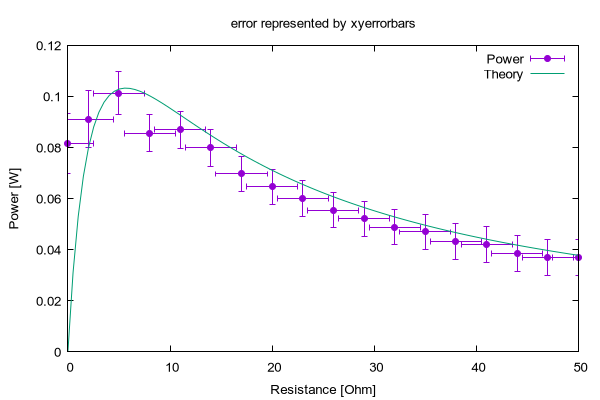
So to plot only the first three lines use following command: plot 'input. In general, every command allows you to specify what part of the input file you want to use. To limit the number of rows used from the file, we can use every option of plot command. Resulting image after all modifications is shown below. If you want Y axis to start from zero instead, specify yrange: set yrange To set the color, first, create corresponding line style (we created line style 1): set style line 1 lt 1 lc rgb "blue"Īnd then use it when plotting: plot "input.dat" using 2:xtic(1) ls 1Īs you can see gnuplot automatically shifts Y axis, so C bar is not visible. Then tweak the boxwidth: set boxwidth 0.9 We can even do some simple processing on the data, like inverting it: plot "input.dat" using (-$2):xtic(1)įirst add title to it: set title "Very simple histogram" The terminal should now look like this: svemuri8login-s4 gnuplot G N U P L O T Version 5.0 patchlevel 5 last. Now we are ready to do plotting: we use data from second column of input.dat file, with the first column as labels for X axis. Run the gnuplot command to start Gnuplot. Set terminal pngcairo enhanced font "arial,8" fontscale 1.0 size 700, 480

We want resulting images to be in files, so we use pngcairo terminal. Then we specify how the plot should be displayed – should it be opened in separate window or saved to file. A frontend for GNUPlot with the intention of making the plotting of a variety of graphs easy and. It sounds like you want to set the x axis to logscale base 2. Comment if this isn't what you're looking for.

run them from interactive console (just run gnuplot without any parameters to enter this mode).There are two options how you can execute gnuplot commands: On the first step we generate one histogram from the whole dataset (it is the last image from the sequence).
#GNUPLOT LOG FULL#
Step 1: Produce last image from the full file This includes qualitative information such as stack traces, but the frequency of certain messages may also be of interest and that is what this we will focus on here. The resulting sequence of images combined to GIF file looks like this: Log visualization with gnuplot Log visualization with gnuplot Often when investigating an issue there is information in logs that isn’t captured well by Prometheus metrics. On the first image we want only the first record to be presented, on the second – the first two, on the last – the full dataset. The input file contains following data: A 5 The fun project for today is to generate a sequence of plots using one gnuplot file. This terminal is provided to allow for the debugging of gnuplot.Generating sequence of histograms using gnuplot Then I tried to get slope value at different range as below. Code: f (x) b + mx fit f (x) 'xyMSD-all-mal-cel-iso-bcm-thermo2.dat' using 1:2 via m,b. I am trying to fit a plot in gnuplot using logscale. It exists a debug terminal of gnuplot that if enabled in your version can help in the debug procedure. Log-log plot in gnuplot and limiting the xrange. print "here I am #n", execute it and read the last Here I Am #). stringcolumn(x) int: content of column 77 as a string. exists('X') 'variable name' returns 1 if a variable named X is defined, 0 otherwise. defined(X) variable name DEPRECATED returns 1 if X is defined, 0 otherwise. Then you can start to divide your script until you find the error (or you can write in some points lines as print "here I am #1". other gnuplot functions: Function: Arguments: Returns: column(x) int: column 77 during datafile manipulation. I can add that you can call gnuplot with dash as the last parameter to stay in the interactive regime when the script completes. Make the file itself executable, by shebang (#!) notation (depends on exact path): Alternatively, run gnuplot with the -persist command line switch, so gnuplot exits, but the window persists.Put pause -1 (pause until carriage return) at the end of the file, then run it from the command line.Start gnuplot interactively, then load the file in question. wave length of the light (lambda) in the secondary axis X2.Change the terminal to interactive (instead of outputting to a file), by commenting out set terminal and output lines.If it returns a number different from 0 it means it crashed.įrom this wikibook you can read some tips:įor debugging a gnuplot file, it is often useful to:

The -persist parameter can fix your problem. If it returns 0 it means the execution finished without error.
#GNUPLOT LOG CODE#
To do it just run your command and after ask to the shell the exit code with echo $? gnuplot -e "plot 'data.dat'" Before of all you need to be sure that gnuplot is crashing.


 0 kommentar(er)
0 kommentar(er)
